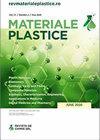基于被子体概念的聚合物药物涂层球囊用于腘下血管成形术的比较研究
IF 0.7
4区 材料科学
Q4 MATERIALS SCIENCE, MULTIDISCIPLINARY
引用次数: 1
摘要
动脉粥样硬化会影响身体任何部位的血管,狭窄(变窄)可能位于为重要器官(如大脑、腹部器官或四肢)提供血管的动脉上。血管内手术是一种通过微创技术(穿刺、微创血管方法)治疗血管病理学的现代方法,它代表了外科技术的丰富,并在术后和长期结果方面带来了相当大的改善。聚合物药物涂层球囊的使用是一种有吸引力的替代方案,因为它们可以提供前景与简单的球囊相比改善了通畅性并且减少了对支架的需要。本研究的目的是描述聚合物材料,并比较在血管体靶向腘下血管成形术中获得的医学终点,该血管成形术使用基于聚乙烯的两层简单球囊和分别包含聚乙烯、聚(环己基乙烯)、,聚异戊二烯和被紫杉醇覆盖的聚(1,3-丁二烯)。通过差示扫描量热法、应力-应变和穿刺试验对气球进行了表征,以描述其物理和机械特性。另一方面,对51例严重肢体缺血患者采用不同的球囊血管成形术进行治疗,并在干预后监测12个月;评估了以下参数:糖尿病、高血压、肾功能不全、血液透析、中风、血脂异常、心脏病、心力衰竭、体重指数、被子体数量、肌酸酐、伤口愈合、1、2、3、6、9、12个月的保肢和无截肢生存率。胫骨前动脉和胫骨后动脉血管斑块与年龄、高血压和肾功能不全有显著相关性。另一方面,结果表明,药物在球囊表面的沉积导致观察到的医学终点值的提高。总之,这项研究表明,基于血管组的药物涂层球囊腘下血管成形术可以更好地愈合伤口和挽救腿部。本文章由计算机程序翻译,如有差异,请以英文原文为准。
Comparative Investigation on Polymer Drug-coating Balloons Used in Infrapopliteal Angioplasty Based on Angiosomes Concept
Atherosclerosis can affect the blood vessels in any region of the body and the stenosis (narrowing) can be located on an artery that vascularize important organs, such as the brain, abdominal organs or limbs. The endovascular surgery is a modern approach to vascular pathology through minimally invasive techniques (puncture, minimally vascular approach) and it represents an enrichment of the arsenal of surgical techniques and brings considerable improvements in post-operative and long-term outcomes The use of polymer drug-coating balloons is an attractive alternative because they can offer the promise of an improved patency compared to the simple balloons and a reduction in the need for stents. The aims of this study were to describe the polymer materials and to compare the medical endpoints obtained in angiosome-targeted infrapopliteal angioplasty using a simple balloon with two layers, based on polyethylene, and respectively a drug-coated balloon that contains a multiblock copolymer from polyethylene, poly(cylohexylethylene), polyisoprene and poly(1,3-butadiene) covered by Paclitaxel. The balloons were characterized by differential scanning calorimetry, stress-strain and puncture tests in order to describe their physical and mechanical characteristics. On the other hand, 51 patients with critical limb ischemia were treated with different balloon angioplasty and they were monitored for 12 months after the intervention; the following parameters have been evaluated: diabetes, hypertension, renal insufficiency, hemodialysis, stroke, dyslipidemia, heart disease, heart failure, body mass index, number of angiosomes, creatinine, and wound healing, leg salvage and amputation-free survival at 1, 2, 3, 6, 9, 12 months. Significant associations were found in the case of anterior-tibial-artery and posterior-tibial-artery angioplasy and the age, hypertension and renal insufficiency. On the other hand, the results indicate that the drug deposition on the surface of the balloons lead to improved values for the observed medical endpoints. In conclusion, this study reveals that angiosome-based infrapopliteal angioplasty with drug-coated balloons can be associated with better wound healing and leg salvage.
求助全文
通过发布文献求助,成功后即可免费获取论文全文。
去求助
来源期刊

Materiale Plastice
MATERIALS SCIENCE, MULTIDISCIPLINARY-
CiteScore
1.40
自引率
25.00%
发文量
99
审稿时长
6-12 weeks
期刊介绍:
Materiale Plastice, abbreviated as Mater. Plast., publishes original scientific papers or guest reviews on topics of great interest.
The Journal does not publish memos, technical reports or non-original papers (that are a compiling of literature data) or papers that have been already published in other national or foreign Journal.
 求助内容:
求助内容: 应助结果提醒方式:
应助结果提醒方式:


